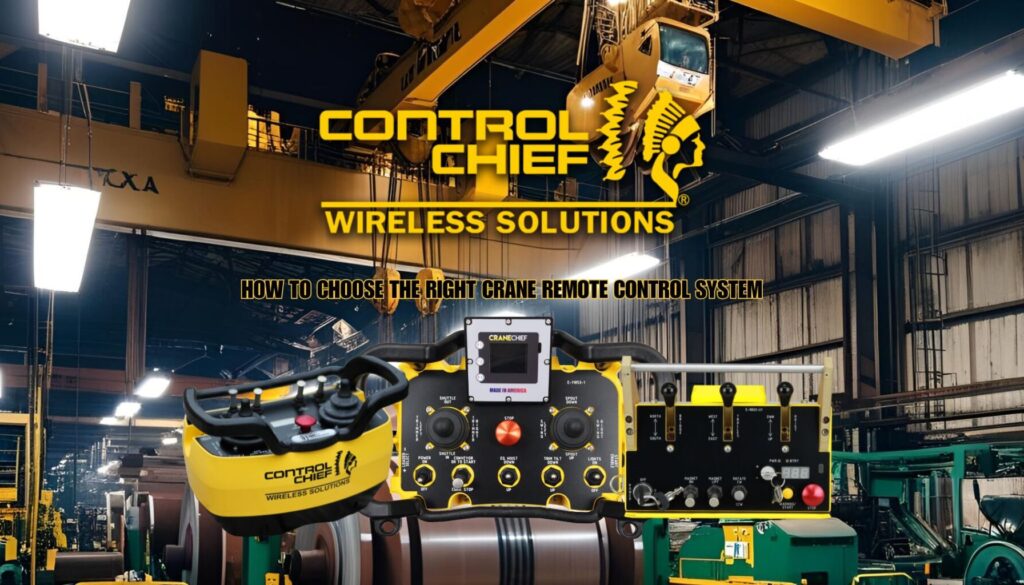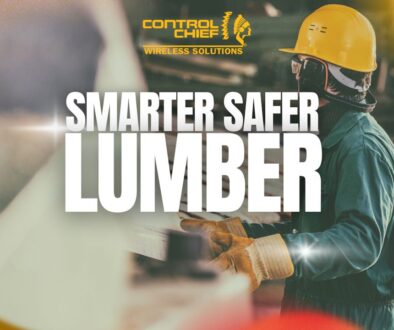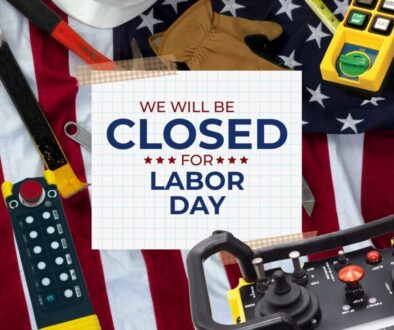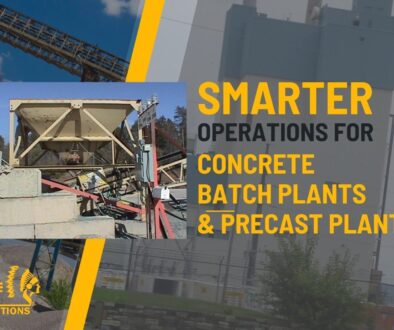How to Choose the Right Crane Remote Control System for Your Operation

Upgrading equipment is a natural part of improving efficiency, safety, and productivity in industrial operations. When it comes to crane remote control systems, selecting the right solution can significantly impact workflow, operator comfort, and overall workplace safety. Whether you’re in manufacturing, construction, logistics, or heavy industry, choosing the best wireless crane remote control means considering factors like usability, durability, range, and safety.
For over five decades, Control Chief has been a leader in industrial remote control solutions, providing rugged, reliable, and high-performance systems designed to meet the demands of modern crane operations. If you’re evaluating a crane radio remote system, here are the key considerations to guide your decision.
1. Identify Your Current Challenges
Before upgrading to a new crane remote control, assess the challenges with your current system. Ask yourself:
✅ Are operators struggling with poor signal reliability or frequent interference?
✅ Is your remote control system outdated and slowing down operations?
✅ Are cumbersome controls leading to operator fatigue and inefficiency?
✅ Does your current remote fail to withstand harsh industrial conditions?
✅ Is your current crane remote control vendor nonresponsive to your critical needs?
A well-designed wireless crane remote should:
✔️ Enhance workflow and increase precision
✔️ Reduce operator fatigue with an ergonomic design
✔️ Withstand heavy-duty industrial us

Control Chief’s CraneChief™ Transmitters
and L-Series remotes
are ergonomically designed with responsive controls, ensuring seamless crane operation in demanding industrial environments.
2. Evaluate the Remote’s Functionality and Range
The right crane remote control system should meet the specific needs of your facility. Some businesses require a simple, single-crane control system, while others need a multi-crane solution or a solution highly customized for today’s engineered cranes.
Key considerations include:
🔸 RF Stability – Does the system eliminate nuisance dropouts to ensure consistent and uninterrupted operation?
🔸 Multi-crane operation – Can operators easily switch between cranes when needed?
🔸 Precision control – Are joysticks, paddles, levers, toggles, or push buttons optimized for smooth crane movement?
3. Consider Battery Performance and Reliability
A crane remote control system is only as reliable as its power source. Frequent battery changes or short battery life can disrupt workflow, cause downtime, and add unnecessary costs. Choosing the right battery technology ensures your remote operates efficiently throughout demanding shifts.
Key considerations include:
🔸 Battery lifespan – How long does the battery last before needing replacement?
🔸 Charging flexibility – Can the battery be recharged at any time without reducing its lifespan?
🔸 Charge time – Does the battery offer quick charging to minimize downtime?
🔸 Memory effect – Will the battery’s capacity degrade over time with repeated partial charges?
💡 Control Chief remotes use advanced Lithium-Ion (Li-Ion) batteries
providing longer life, faster charging, and greater reliability compared to Nickel-Cadmium (Ni-Cd) or Alkaline batteries. Unlike older battery types, Li-Ion batteries do not develop a “memory effect,” meaning they can be charged anytime without losing capacity. This ensures operators always have a fully powered, ready-to-use remote when they need it most.

4. Durability: Built for Tough Environments
Crane remote controls must be designed for rugged industrial use, especially in facilities where dust, moisture, and physical impact are common.
Key Features of a Durable Crane Remote:
✔️ Weather resistance – Designed to withstand rain, dust, and extreme temperatures, ensuring continued performance in both indoor and outdoor environments.
✔️ Shock and Impact Resistance – A high-quality crane radio remote control should survive accidental drops, vibrations, rough handling and daily wear and tear.
✔️ Heavy-duty materials – Some environments, such as mining, steel mills, and high-temperature facilities, require reinforced construction. Powder-coated aluminum housings and durable control components provide extra strength and longevity in these extreme conditions.
✔️ Quick Serviceability – If your remote fails, can it be easily repaired or replaced without causing major downtime? Modular designs and easily replaceable components allow for quick servicing, reducing downtime and keeping operations running smoothly.
🔹Control Chief’s CraneChief HD: Built for the Toughest Jobs For industries that demand exceptional durability, the CraneChief HD features a rugged aluminum housing and heavy-duty controls, making it ideal for mining, foundries, and extreme industrial environments. Engineered for maximum reliability, the CraneChief HD ensures uninterrupted operation, even in the most punishing conditions.

🔹Control Chief’s CraneChief HD: Built for the Toughest Jobs
For industries that demand exceptional durability, the CraneChief HD features a rugged aluminum housing and heavy-duty controls, making it ideal for mining, foundries, and extreme industrial environments. Engineered for maximum reliability, the CraneChief HD ensures uninterrupted operation, even in the most punishing conditions.
5. Prioritize Operator Safety
Safety is the number one priority when selecting a wireless remote control for overhead cranes. Traditional wired pendant controls require operators to stay close to the load, increasing the risk of accidents. In contrast, a wireless crane remote control system allows operators to maintain a safe distance, reducing workplace hazards.
Essential Safety Features for Crane Remote Controls:
✔️ Easily Accessible Stop Button – Provides operators with a quick and reliable way to stop crane movement when necessary, ensuring immediate response in critical situations.
✔️ Built-in Diagnostic Features – Integrated switch diagnostics help monitor system health and detect potential issues before they become critical, enhancing operational safety and reducing downtime.
✔️ Secure Signal Encryption – Prevents unauthorized interference and ensures that only approved operators have control, maintaining a safe and secure working environment.
✔️ Sealed, Weather-Resistant Enclosures – Protects internal components from dust, moisture, and harsh environmental conditions, ensuring reliable operation in demanding work environments.
💡 Control Chief’s Telechief™ Industrial Remote Controls provide reliable wireless operation up to 300 feet, ensuring operators can control equipment from a safe location.
💡 Control Chief’s Telechief™ Industrial Remote Controls
provide reliable wireless operation up to 300 feet, ensuring operators can control equipment from a safe location.

6. Choose a Reliable Remote Control Partner
Selecting the right crane remote control system is just one part of the equation. To maximize the value of your investment, you also need a reliable provider who offers ongoing support and customized solutions tailored to your specific needs. A trustworthy partner will provide:
✔️ Customized Solutions – Your operations are unique, and so are your needs. A reliable vendor will work closely with you to design and implement a control system specifically for your facility, taking into account the types of cranes you use, their operational requirements, and any specific challenges you face.
✔️ Complete Facility Solutions – Rather than simply selling you individual systems for each crane, a dependable partner will ensure that all of your equipment works together seamlessly across your entire facility. This integration helps minimize operational disruptions and enhances overall productivity.
✔️ Modular Design and Flexibility – A modular approach allows you to upgrade or replace parts of your system without having to overhaul the entire setup. If something fails, individual components can be replaced quickly and easily, reducing downtime and improving your system’s longevity.
✔️ Long-Term Relationship and Support – The right partner will focus on building a long-term relationship with your business. Instead of aiming for a quick sale, they will provide consistent support, troubleshooting, and maintenance services to ensure that your system remains operational and efficient for years to come.
✔️ Expert Ongoing Support – Look for a provider with expertise in industrial remote control systems who can offer guidance not just during installation, but also for troubleshooting, service, and regular maintenance. This ensures your system stays optimized and minimizes potential issues down the road.
✔️ Universal Compatibility – A solid vendor will provide remote control systems that are flexible and can be reassigned to different cranes or equipment within your facility as your operations evolve. This adds convenience and ensures your system adapts as your business grows.
✔️ Proven Track Record – Choose a vendor with a history of delivering reliable, high-performance solutions. A trusted partner should have a proven track record in the industry, with a reputation for providing dependable, cutting-edge technology that stands the test of time.
🔹 Control Chief has been a leader in industrial remote controls for decades, delivering customized solutions designed to meet the unique needs of crane operators and industrial facilities. Our modular systems and expert support ensure you get a solution that works for you today and scales with your operation for years to come.
By choosing the right partner, you’re not just purchasing equipment—you’re investing in a solution designed to grow with your business, ensuring your crane remote control system provides ongoing value and performance.
Upgrade to a Smarter, Safer Crane Remote System
Investing in the right crane remote control system enhances efficiency, safety, and ease of operation. Whether you need advanced multi-crane control, rugged durability, or infrared operation, Control Chief has the solution.

📞 Contact us today
to learn how our CraneChief™, L-Series Crane Remote, and Raymote® systems can modernize your crane operations and improve workplace safety.
Views: 29



